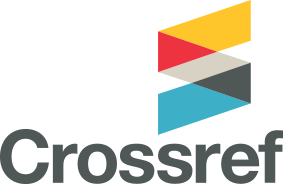TAMPILAN REPRODUKSI HASIL INSEMINASI BUATAN MENGGUNAKAN SEMEN BEKU HASIL SEXING PADA SAPI PERSILANGAN ONGOLE DI PETERNAKAN RAKYAT
Abstract
The purpose of this research was to determine the success of AI using sexed semen results based on NRR, S/C, CR, and rectal palpation were also determine. The total number of 81 acceptors divided into 3 treatment groups, such as P0 (non- sexed semen) ; P1 (Frozen semen Sexed using White Yolk Sedimentation), P2 (Frozen semen sexed using Percoll Gradient Centrifugation) . The results showed the NRR percentage of P0, P1 and P2 were between the treatments are P0 of 74.07 ± 12:00%; 65.43 ± 5.66% and 64.19 ± 8:56% respectively. Furthermore the highest of CR was in P0 44%, P2 25.91% and P1 18.51%. Conclution of this research was the highest percentage of pregnancy was 59.25 %(P0) , P1 51.85% and the lowest was in 44.44%. The S/C was in (P0) 2.31 follow by 3.00 in P2 and 3.33 in P1.
Key words : artificial insemination , frozen semen sexed, the percentage of Gestation and feed
Refbacks
- There are currently no refbacks.

This work is licensed under a Creative Commons Attribution-NonCommercial 4.0 International License.










